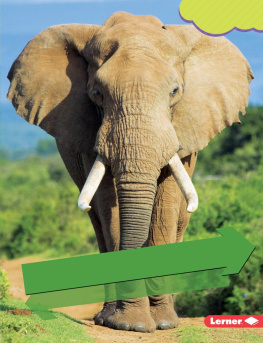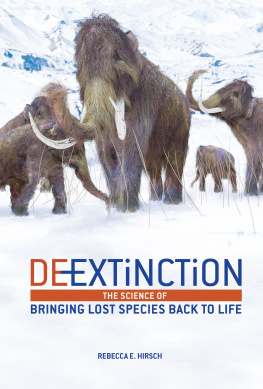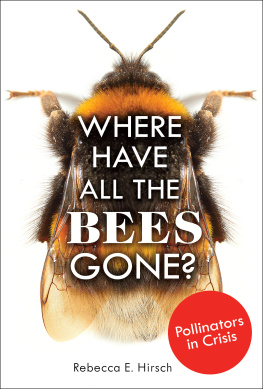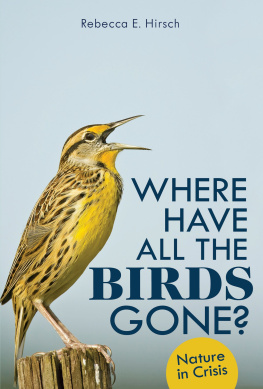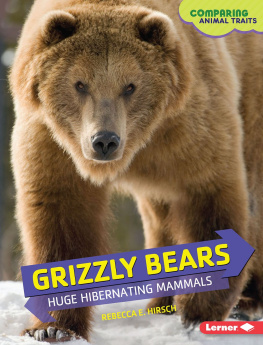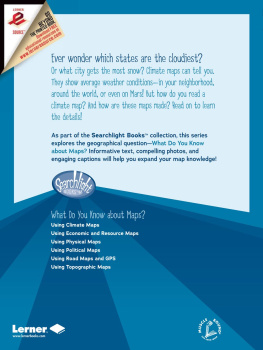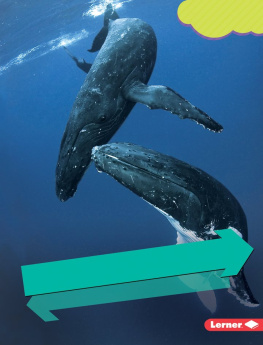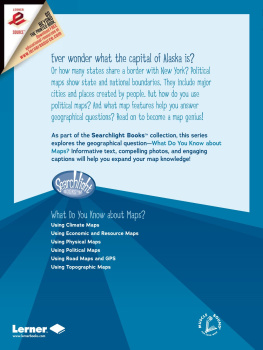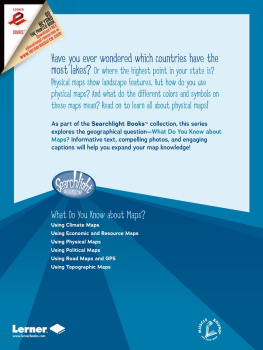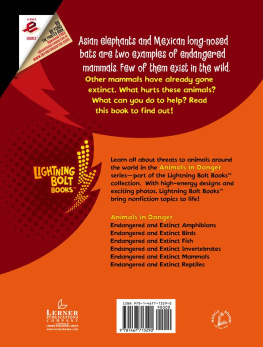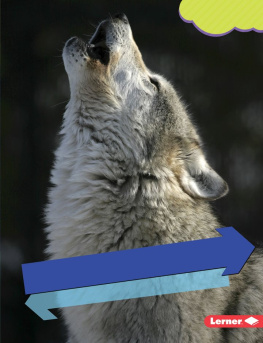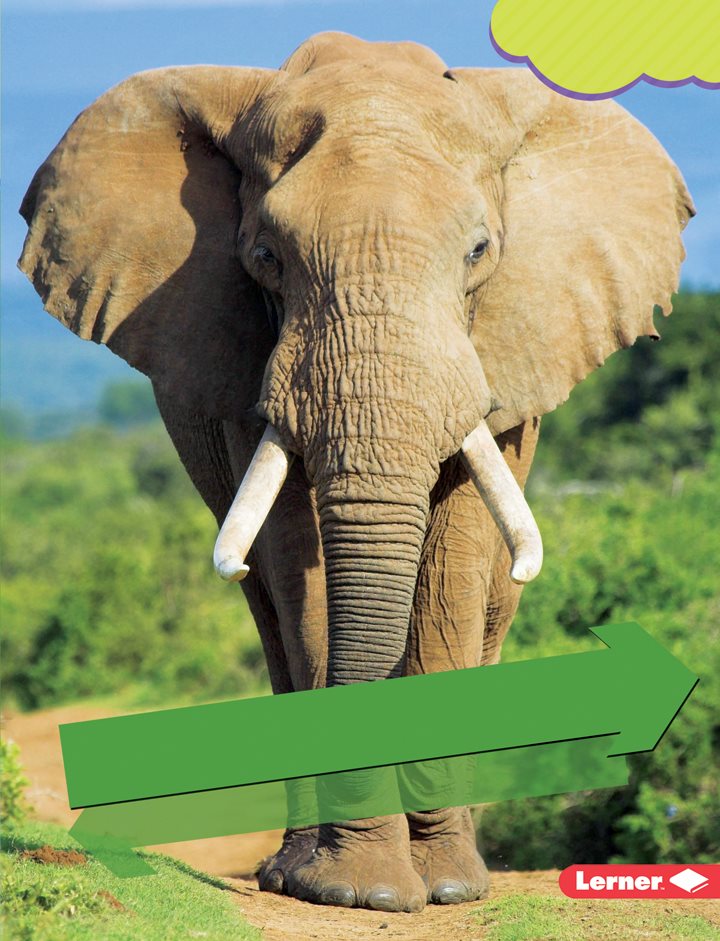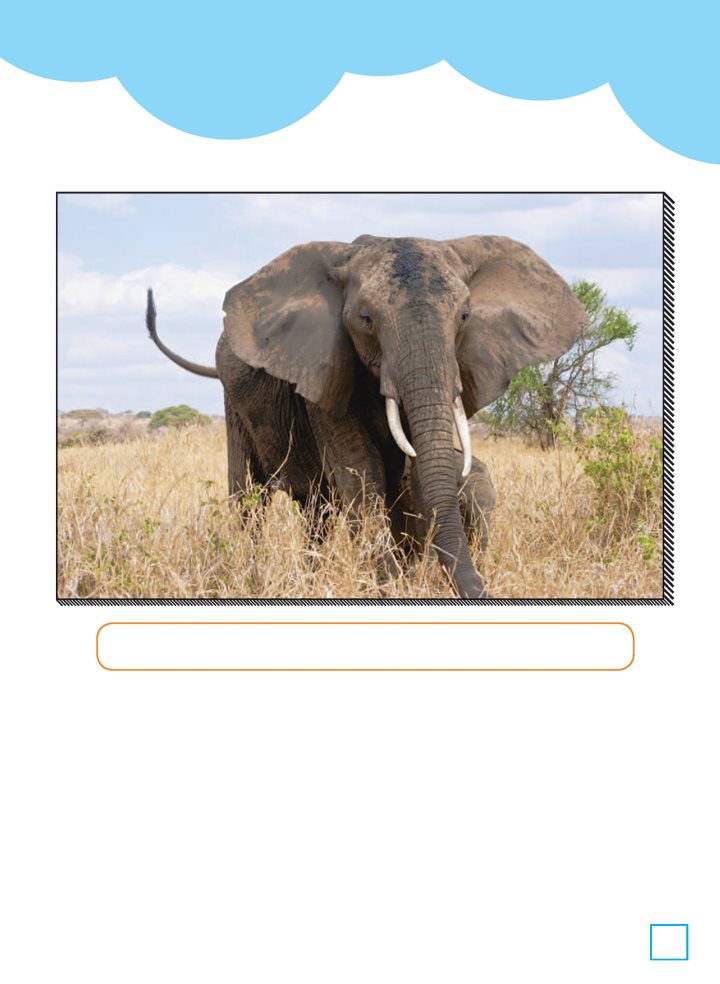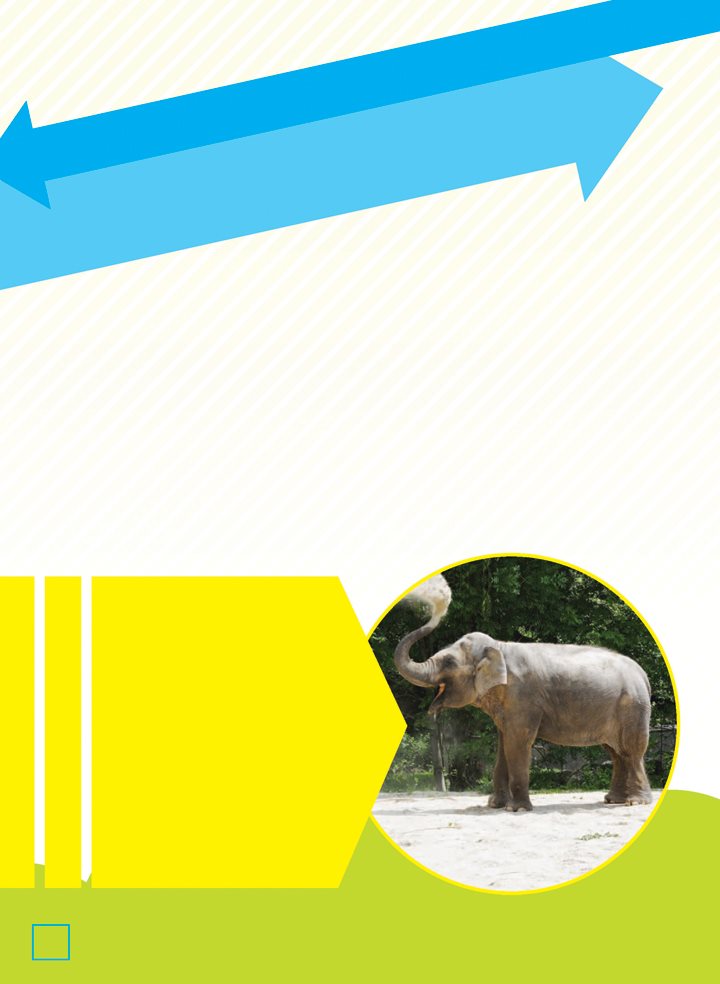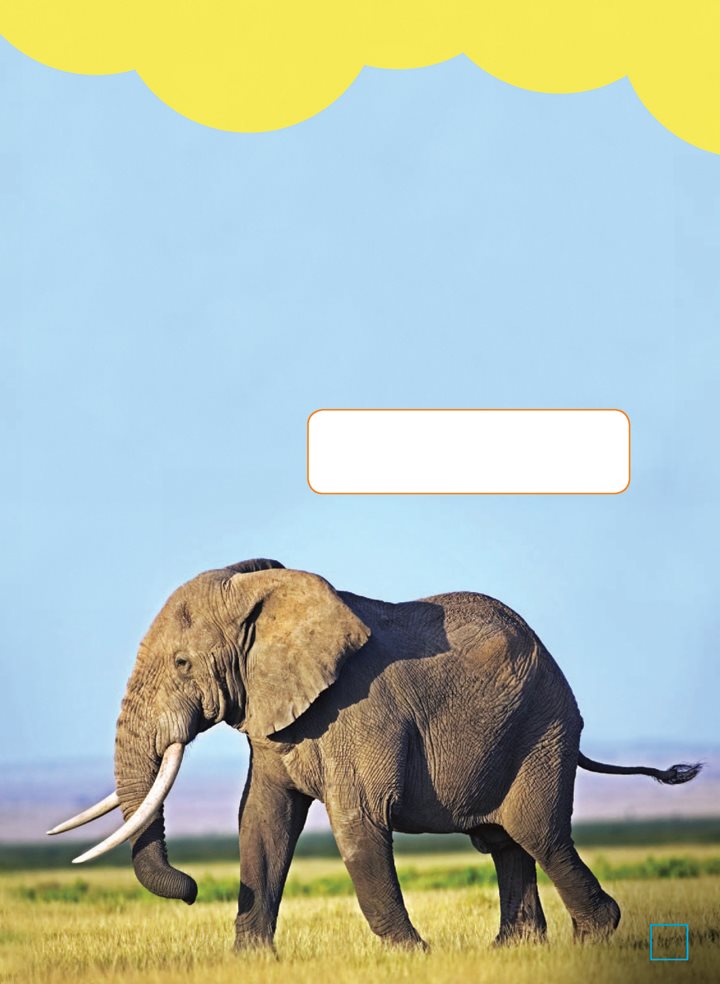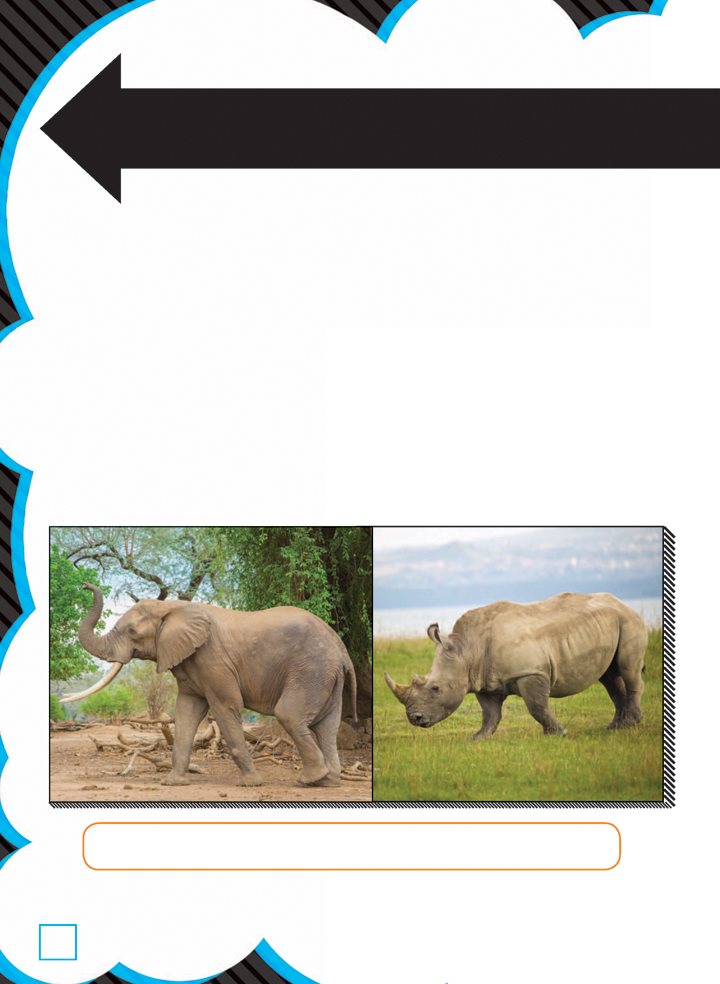comparing
ANIMAL TRAITS
AFRICAN ELEPHANTS
MASSIVE TUSKED MAMMALS
REBECCA E. HIRSCH
Copyright 2015 by Lerner Publishing Group, Inc.
All rights reserved. International copyright secured. No part of this book may be reproduced, stored in
a retrieval system, or transmitted in any form or by any meanselectronic, mechanical, photocopying,
recording, or otherwisewithout the prior written permission of Lerner Publishing Group, Inc., except for
the inclusion of brief quotations in an acknowledged review.
Lerner Publications Company
A division of Lerner Publishing Group, Inc.
241 First Avenue North
Minneapolis, MN 55401 USA
For reading levels and more information, look up this title at www.lernerbooks.com.
Photo Acknowledgments
The images in this book are used with the permission of: Maggy Meyer/Shutterstock.com, p. 1;
GibasDigiPhoto/iStock/Thinkstock, p. 4; Latitudestock/Getty Images, p. 5; iStockphoto.com/
AlesVeluscek, p. 6; Martin Harvey/Photolibrary/Getty Images, p. 7; Jez Bennett/Shutterstock.com, p. 8
(left); Bartosz Budrewicz/Shutterstock.com, p. 8 (right); Volodymyr Burdiak/Shutterstock.com, p. 9
(top); Martin Withers/FLPA/Getty Images, p. 9 (bottom); Merlin D. Tutle/Getty Images, p. 10; David
Fettes/Cultura/Getty Images, p. 11 (left); Margarita Steinhardt, p. 11 (right); Heinrich van den Berg/
Oxford Scientific/Getty Images, p. 13; Marc Guitard/Moment Open/Getty Images, pp. 14, 15 (top); Britta
Kasholm-Tengve/E+/Getty Images, p. 15 (bottom right); Robert Harding Picture Library Ltd/Alamy,
p. 15 (left); Jaime Grill/Getty Images, p. 16; iStockphoto.com/Lindsay Basson, p. 17 (left); Design Pics/
Ed Robinson/Newscom, p. 17 (right); Fabian von Poser/Getty Images, p. 18; Martin Harvey 2004/
Getty Images, p. 19 (top); Christopher Scott/Gallo Images/Getty Images, p. 19 (bottom); J & C Sohns/
Picture Press/Getty Images, p. 20; David Cayless/Getty Images, p. 21 (left); Westend 61 GmbH/Alamy,
p. 21 (right); Edo Schmidt/Alamy, p. 22; animalimagery.co.uk/Alamy, p. 23 (top); Don Johnston/All
Canada Photos/Getty Images, p. 23 (bottom); Sergio Pitamitz//Robert Harding World Imagery/Getty
Images, pp. 24, 25; Anup Shah/Stone/Getty Images, p. 26; De Agostini/Getty Images, p. 27 (bottom);
iStockphoto.com/EcoPic, p. 27 (top); AP Photo/Ronald Wittek, p. 28; Rick & Nora Bowers/Alamy, p. 29
(right); Peter Barritt/Alamy, p. 29 (left).
Front cover: iStockphoto.com/NightOwlZA.
Back cover Amy Nichole Harris/Shutterstock.com.
Main body text set in Calvert MT Std 12/18. Typeface provided by Monotype Typography
Library of Congress Cataloging-in-Publication Data
Hirsch, Rebecca E., author.
African elephants : massive tusked mammals / by Rebecca E. Hirsch.
pages cm. (Comparing animal traits)
Includes index.
ISBN 978-1-4677-5576-4 (lib. bdg. : alk. paper)
ISBN 978-1-4677-6059-1 (pbk.)
ISBN 978-1-4677-6215-1 (EB pdf)
1. African elephantJuvenile literature. I. Title.
QL737.P98H55 2015
599.674dc23 2014025210
Manufactured in the United States of America
1 BP 12/31/14
TABLE OF CONTENTS
Introduction
MEET THE AFRICAN ELEPHANT
Chapter
WHAT DO AFRICAN ELEPHANTS LOOK LIKE?
Chapter
WHERE DO AFRICAN ELEPHANTS LIVE?
Chapter
LIFE IN THE ELEPHANT HERD
Chapter
THE LIFE CYCLE OF AFRICAN ELEPHANTS
INTRODUCTION
MEET THE AFRICAN ELEPHANT
A family of African elephants gathers in a shallow river. The
young elephants wrestle in the mud and grab sticks with their
trunks. As the young elephants play, the adults keep a careful
watch. African elephants are a kind of animal called a mammal.
Other kinds of animals include insects, fish, amphibians,
reptiles, and birds.
African elephants play in the mud.
African elephants are vertebrates and have warm blood, just like all mammals.
Mammals belong to a larger group of animals called
vertebrates. All vertebrates have backbones. Mammals are
warm- blooded, which means they can keep their bodies warm
even in cold weather. All mammals have hair or fur on their
bodies. All mammal mothers make milk for their babies. African
elephants are similar to other mammals in many ways. But
African elephants also have traits that make them unique.
CHAPTER
WHAT DO AFRICAN
ELEPHANTS LOOK LIKE?
The African elephant is a huge mammal with gray skin,
enormous tusks, and a long trunk. Adult males (or bulls) can
weigh as much as 14,000 pounds (6,350 kilograms). Females (or
cows) reach about half that weight. African elephants are the
largest living animals on land.
Both male and female elephants have tusks. Tusks are a kind
of teeth. They grow longer as the elephant grows older. African
elephants use their tusks to dig for water in dry riverbeds. They
also use tusks to defend themselves.
DID YOU KNOW?
ASIAN
ELEPHANTS
have smaller bodies than
African elephants. An
Asian elephants back is
rounded, but an African
elephants back dips in
between the animals
shoulders and hips.
African elephants use their long trunks to smell, breathe, find
food, suck up water, and greet other elephants. Two projections
at the tip of the trunk act like fingers. An elephant can lift whole
trees or pick up very small objects. The ears let heat escape
the elephants body. This helps the animal keep cool under the
blazing African sun.
Male African elephants measure from to feet
(6 to 7.3 meters) in length. Female African elephants
usually measure about feet (0.6 m) less than that.
AFRICAN ELEPHANT VS.
WHITE RHINOCEROS
A white rhinoceros munches grass with its head low to the
ground. Its pointy horns stick forward. White rhinoceroses
live in southern Africa. They are one of the biggest animals
on land. The only larger land animal is an elephant. An adult
male rhino can weigh up to 5,070 pounds (2,300 kg). As with
African elephants, female white rhinos are smaller than males.
African elephants and white rhinoceroses look similar.
Like an African elephant, the white rhinoceros has gray,
wrinkly skin and an enormous head. Both animals are nearly
hairless. The white rhino has a few hairs on its body and a
tuft of hair at the tip of its tail.

